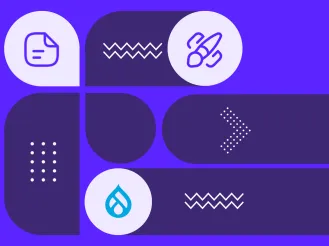5 Headline Tricks to Improve Click-Through-Rates
Digital readers skim and scan web text. You can search for numerous research papers and articles on the topic including this one by the Washington Post “Serious reading takes a hit from online scanning and skimming, researchers say.” When I first read the article, I became accutely aware of my own "web reading" behavior. I started by reading the first sentence. Seemed interesting, so my next step was was to scroll the page. I wanted to scan the subheadings to gauge the context of the entire article. I only scrolled half the page before stopping and closing the tab. Why did I automatically close the tab so fast? The first reason is lack of "chunking" which I'll cover in detailed blog in the near future. Briefly explained, chunking applies (mostly) to web copy and the use of headings, subheadings, lists, paragraph sizes etc. It breaks up huges bodies of text and "chunks" it up into more consumable bits. In the case of the Washington Post article, I felt a bit overwhelemed with the huge amount of body text and the tiny subheading so I left. The second reason I left was knowing I can get solid information by moving on - and quickly. 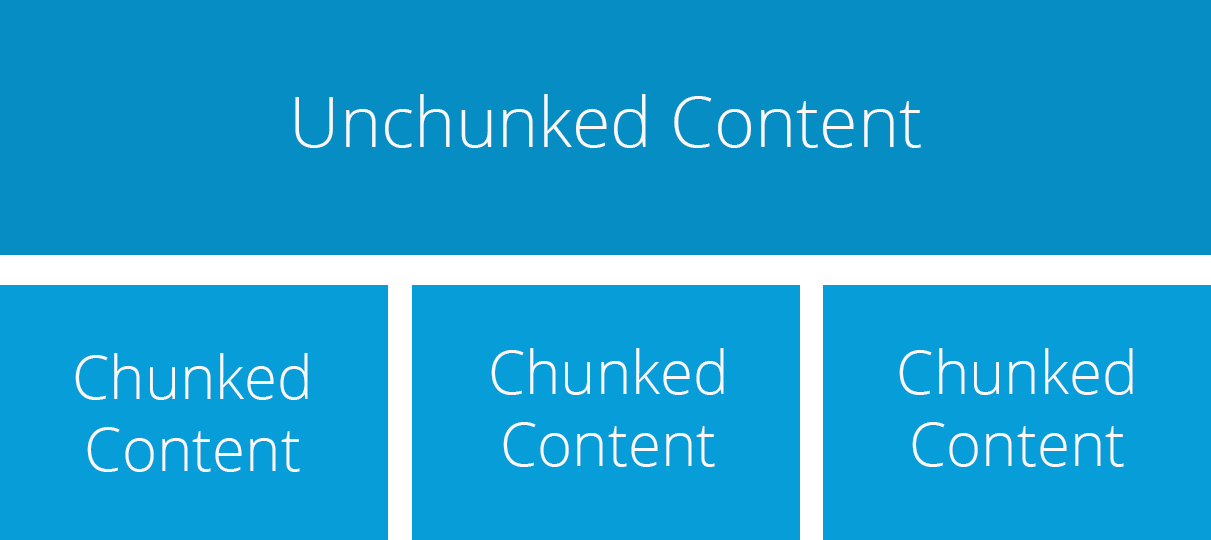 Headings are like way-points for users. If you remove all the body text and images and left only the headlines, they should be able to still describle what the article is about - albeit at 50,000 feet. I am by no means isolated in this skimming and scanning behavior. So what does this mean? It means you should spend most of your time writing your headlines and subheadings before even starting on the body of your article, blog post, or any web copy. You need to have a strategy in place that helps you create the type of compelling headlines that will generate higher click-through rates (CTR), again and again. This blog will focus on five headline tricks to inspire you and provide a starting to get your content stronger CTRs.
Headings are like way-points for users. If you remove all the body text and images and left only the headlines, they should be able to still describle what the article is about - albeit at 50,000 feet. I am by no means isolated in this skimming and scanning behavior. So what does this mean? It means you should spend most of your time writing your headlines and subheadings before even starting on the body of your article, blog post, or any web copy. You need to have a strategy in place that helps you create the type of compelling headlines that will generate higher click-through rates (CTR), again and again. This blog will focus on five headline tricks to inspire you and provide a starting to get your content stronger CTRs. 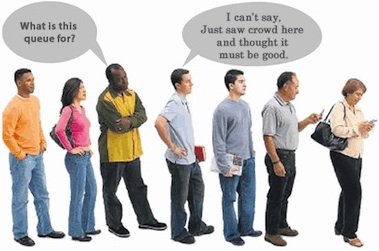
 EXAMPLE HEADLINE: Consider the following FOMO headline as inspiration for your own: "iMac Blowout Sale -- Only 7 left in Stock! Order within the next 2 hours and get it tomorrow with free shipping." I’m actually guilty of “acting” on these types of callouts. Amazon uses them and gets a sale from me almost every time. FOMO’s should draw out a strong desire to “must have it now”. Take caution when crafting these types of headlines though - users are turned off by cheap, in-your face sales tactics.
EXAMPLE HEADLINE: Consider the following FOMO headline as inspiration for your own: "iMac Blowout Sale -- Only 7 left in Stock! Order within the next 2 hours and get it tomorrow with free shipping." I’m actually guilty of “acting” on these types of callouts. Amazon uses them and gets a sale from me almost every time. FOMO’s should draw out a strong desire to “must have it now”. Take caution when crafting these types of headlines though - users are turned off by cheap, in-your face sales tactics. 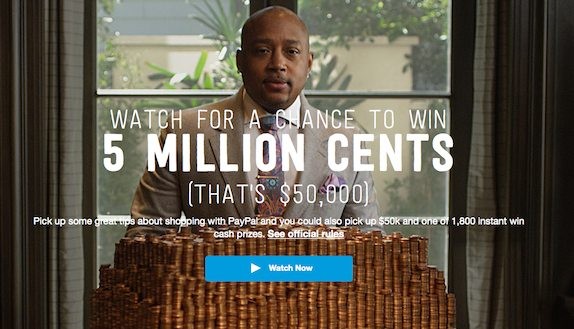 EXAMPLE HEADLINE: In 2015, PayPal ran an instant win sweepstakes: “Watch for a Chance to Win 5 Million Cents (That’s $50,000).” The mystery is the video and the motivation is the chance to win $50k. Some of you might even recognize the man in front of all those pennies, Daymond John, CEO of FUBU and investor on ABC’s Shark Tank.
EXAMPLE HEADLINE: In 2015, PayPal ran an instant win sweepstakes: “Watch for a Chance to Win 5 Million Cents (That’s $50,000).” The mystery is the video and the motivation is the chance to win $50k. Some of you might even recognize the man in front of all those pennies, Daymond John, CEO of FUBU and investor on ABC’s Shark Tank. 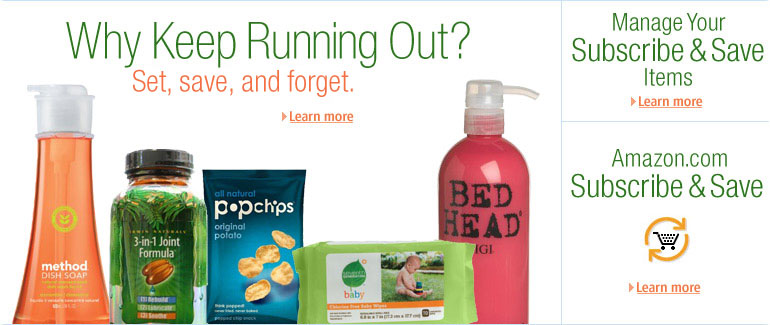 EXAMPLE HEADLINE: "Why Keep Running Out? Set, save, and forget."
EXAMPLE HEADLINE: "Why Keep Running Out? Set, save, and forget." 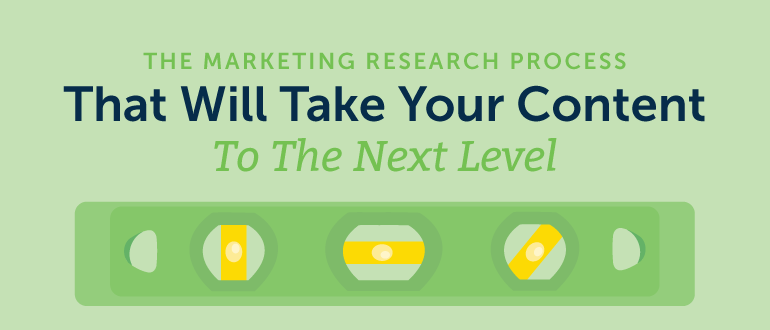 EXAMPLE HEADLINE: "This Is The Marketing Research Process That Will Take Your Content To The Next Level." This title was actually taken from CoSchedule's Blog. This headline did well by me. Naturally in my profession, I help clients take their content to the next level. As a practitioner, I had to know what sort of marketing research process techniques I could be over (or under) looking. CoSchedule received a click and read through from me.
EXAMPLE HEADLINE: "This Is The Marketing Research Process That Will Take Your Content To The Next Level." This title was actually taken from CoSchedule's Blog. This headline did well by me. Naturally in my profession, I help clients take their content to the next level. As a practitioner, I had to know what sort of marketing research process techniques I could be over (or under) looking. CoSchedule received a click and read through from me.
 Headings are like way-points for users. If you remove all the body text and images and left only the headlines, they should be able to still describle what the article is about - albeit at 50,000 feet. I am by no means isolated in this skimming and scanning behavior. So what does this mean? It means you should spend most of your time writing your headlines and subheadings before even starting on the body of your article, blog post, or any web copy. You need to have a strategy in place that helps you create the type of compelling headlines that will generate higher click-through rates (CTR), again and again. This blog will focus on five headline tricks to inspire you and provide a starting to get your content stronger CTRs.
Headings are like way-points for users. If you remove all the body text and images and left only the headlines, they should be able to still describle what the article is about - albeit at 50,000 feet. I am by no means isolated in this skimming and scanning behavior. So what does this mean? It means you should spend most of your time writing your headlines and subheadings before even starting on the body of your article, blog post, or any web copy. You need to have a strategy in place that helps you create the type of compelling headlines that will generate higher click-through rates (CTR), again and again. This blog will focus on five headline tricks to inspire you and provide a starting to get your content stronger CTRs. 1. Social Proof
Social proofing is one of the strongest forces in human psychology. I’ll repeat that again, social proofing is one of the strongest forces in human psychology. Social proof essentially means that when people see other people doing something, they feel more comfortable doing it as well. In fact, they often feel compelled to do it so that they don't seem like an outsider who is going against the grain. Everyone wants to be a part of the "in crowd," so take advantage of this in your marketing, especially in your headlines. If you’re into the TED series like I am, and you want to see it in action, check out Derek Sivers' TED presentation: How to Start a Movement. EXAMPLE HEADLINE: Here's an example of a great social proof headline: "Learn How 10,000 People (and Counting) Received Series A Funding without a Venture Capitalist."
2. FOMO (Fear of Missing Out)
You've no doubt experienced FOMO before. Maybe it was the party that you ended up going to, even though you didn't want to. Maybe you purchased a product online because they were having a limited time sale and you didn't want to miss out. But FOMO is all about leveraging people's fear of “losing something” due to them not “acting” on it when they had the chance. EXAMPLE HEADLINE: Consider the following FOMO headline as inspiration for your own: "iMac Blowout Sale -- Only 7 left in Stock! Order within the next 2 hours and get it tomorrow with free shipping." I’m actually guilty of “acting” on these types of callouts. Amazon uses them and gets a sale from me almost every time. FOMO’s should draw out a strong desire to “must have it now”. Take caution when crafting these types of headlines though - users are turned off by cheap, in-your face sales tactics.
EXAMPLE HEADLINE: Consider the following FOMO headline as inspiration for your own: "iMac Blowout Sale -- Only 7 left in Stock! Order within the next 2 hours and get it tomorrow with free shipping." I’m actually guilty of “acting” on these types of callouts. Amazon uses them and gets a sale from me almost every time. FOMO’s should draw out a strong desire to “must have it now”. Take caution when crafting these types of headlines though - users are turned off by cheap, in-your face sales tactics. 3. Mystery & Motivation
Few things are more exciting than mystery and intrigue. People love the feeling of positive anticipation. Tagging on some motivation like an offer can hyper-compel users to complete a click action. So use this to your advantage and add in a little mystery and/or motivation into your next headline. EXAMPLE HEADLINE: In 2015, PayPal ran an instant win sweepstakes: “Watch for a Chance to Win 5 Million Cents (That’s $50,000).” The mystery is the video and the motivation is the chance to win $50k. Some of you might even recognize the man in front of all those pennies, Daymond John, CEO of FUBU and investor on ABC’s Shark Tank.
EXAMPLE HEADLINE: In 2015, PayPal ran an instant win sweepstakes: “Watch for a Chance to Win 5 Million Cents (That’s $50,000).” The mystery is the video and the motivation is the chance to win $50k. Some of you might even recognize the man in front of all those pennies, Daymond John, CEO of FUBU and investor on ABC’s Shark Tank. 4. Self Reward
Let’s face it, most of us use the web to enhance something in our lives. It may be gaining new knowledge or expertise, purchasing the next best thing or filling in some gap. What ever the reason for coming to the web, your headlines must appeal to your prospect's self-interest. As the site owner and content producer, messages and headlines should of course align with your service or products. I've worked with clients who have incredibly unique products aimed to streamline some work-based arm. One headline and story I've used is playing on the idea of "getting folks home on time." Use your headlines to play on their hardwired desire to reward themselves. EXAMPLE HEADLINE: "Why Keep Running Out? Set, save, and forget."
EXAMPLE HEADLINE: "Why Keep Running Out? Set, save, and forget." 5. Information Tease
One of the most powerful appeals you can make to your users is the promise of useful information. If you want repeat traffic and potentially, brand advocates, that information must be genuine, relevent and useful. Sharing information is what the web is all about after all. So sere it up front in the headlines you craft. Hint at what kind of problem-solving and useful information that will preceed after a click and in the body of your article. EXAMPLE HEADLINE: "This Is The Marketing Research Process That Will Take Your Content To The Next Level." This title was actually taken from CoSchedule's Blog. This headline did well by me. Naturally in my profession, I help clients take their content to the next level. As a practitioner, I had to know what sort of marketing research process techniques I could be over (or under) looking. CoSchedule received a click and read through from me.
EXAMPLE HEADLINE: "This Is The Marketing Research Process That Will Take Your Content To The Next Level." This title was actually taken from CoSchedule's Blog. This headline did well by me. Naturally in my profession, I help clients take their content to the next level. As a practitioner, I had to know what sort of marketing research process techniques I could be over (or under) looking. CoSchedule received a click and read through from me. 





